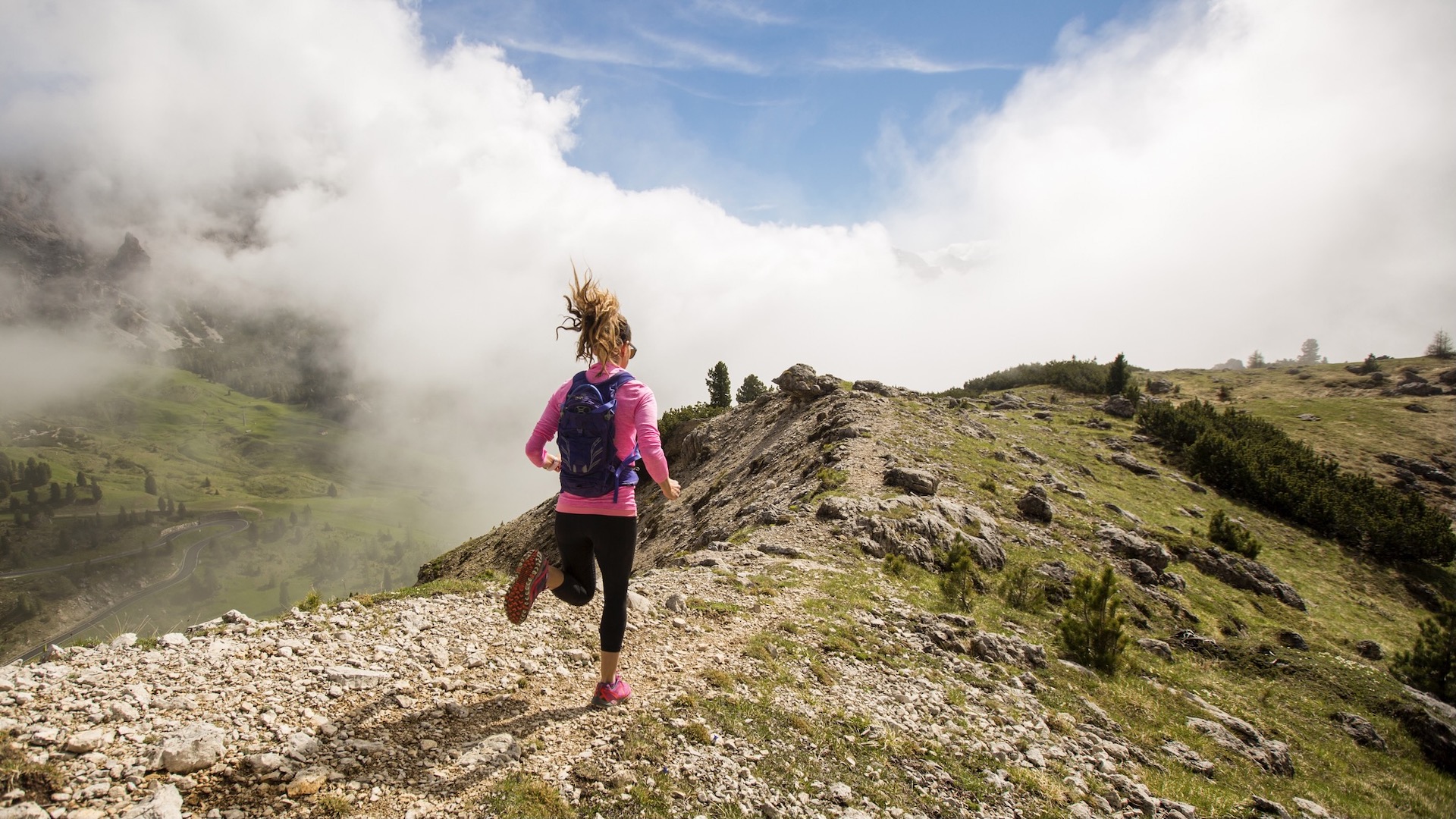
It goes without saying that running uphill comes with added difficulty. There are few things quite as daunting as facing a looming hill as you try to maintain your speed and stamina. If you're a trail runner, you'll be familiar with such challenges, but tackling inclines gets easier once you've mastered the right technique.
As someone who grew up in a flat part of the country, running up hills didn't come easily at first. Despite being a relatively experienced runner, I suddenly had aches and pains in parts of my body that I'd never had before. The issue, my fellow runners told me, was my uphill technique.
There are some common mistakes that inexperienced hill runners make when first taking on inclines, from over-striding to staying on your toes. The good news is that with a few tweaks, you'll be able to take on those hills with confidence and, before long, they won't be quite as intimidating.
1. Starting out too fast

If you think you can run a hilly kilometer as quickly as a flat one, think again. The first and most common uphill running mistake is setting out too fast and consequently tiring out prematurely.
"It's so tempting to bolt ahead of the pack when runners slow on the uphill, but ultimately you'll end up in the back of the pack," explains Zandy Mangold, running coach at Trails & Roots. "Instead, shift into a sustainable running effort if the incline is not too steep. You want to think 'tortoise, not hare' when tackling longer, challenging ascents." You can always make up for lost time on the other side when you're running downhill.
Andy Brooks, Head Coach at Peak Running, always encourages hill runners to "think like a cyclist". "If you're going uphill on a bike, you change down gear," he says. "A cyclist will maintain a similar cadence in terms of the revolutions a minute their legs are going round but they'll be moving forward slower."
2. Running on your toes
When faced with a steep incline, it's difficult to maintain the same points of contact with the ground. Runners tend to spend more time on their toes to increase forward momentum, but relying on the balls of your feet can do more harm than good.
"If the hill is steep, you fall into the trap of inadvertently trying to protect that stretch out of your Achilles by staying on your toes more, but this doesn't give your calf muscles a chance to relax," says Andy. "The danger is that your calf muscles get tighter and start to burn or cramp up." You're also likely to use up more energy and lose balance more easily on your toes.
To avoid injury and fatigue, be conscious of your contact with the ground to improve your running form. A forefoot strike is fine, but you should make sure your heel still lowers slightly before you push off from your toes.
- The best trail running shoes: get a grip on the trickiest terrain
3. Hiking prematurely

Even the most advanced mountain runners will walk uphill on trail runs, but although resting is fine, you should avoid doing so too early. The hardest part will be setting off at a run again. This is often the result of setting out too quickly on the bottom of the hill, meaning you're too exhausted towards the top. By slowing your pace, you'll be able to maintain a more sustained speed.
"Generally, we can always accomplish a little more than we perceive," notes Zandy. "If you employ the right techniques, you'll increase your running efficiency, lower effort, and you'll surprise yourself by running more of the uphill than you thought possible."
4. Attacking the hill
On the other hand, you don't want to overwork yourself when running uphill. A mistake many runners make is throwing themselves at inclines with full force, otherwise known as attacking the hill.
"I encourage people to leave their ego at the bottom of the hill and rather than worry about how fast they're getting up, instead challenge themselves to see how far they can go while keeping a good running motion," Andy explains. "Stop before you've done as much as you can, but stretch yourself rather than push it to your limits."
Running slowly might feel futile, but it's a great exercise to make you a better hill runner. As Andy points out, practicing your running motion – however slowly – will build strength in your Achilles and elasticity in other tendons. "Over a few weeks you'll be able to run faster and further up the hill," he adds.
5. Over-striding

According to Zandy, many runners mistakenly over-stride uphill as they associate covering more ground with going faster, but this approach is far from economical.
"While that form may be associated with more speed for a short, fast incline, it's otherwise less efficient," he says. "Adjusting your technique as the elevation changes will help your muscles work in the most efficient manner which will save energy and delay muscle fatigue. Specific adjustments could include shortening stride length, quickening cadence, and downshifting to a more sustainable effort."
6. Looking down at your feet
Fatigue, poor form, and the pitch of a hill can cause runners to look down at their feet, but experts point this out as one of the common mistakes you make when you run, especially on inclines.
"If you look down, there's extra pressure going through your spine and a tendency for your upper body to collapse which reduces the amount of oxygen you're getting into your lungs," Andy explains. Instead, you should make a conscious effort to look forward, keep your stance upright, and focus your eyeline on a point in front of you.
"Depending on how steep the hill is, this might mean looking into the ground ahead of you," says Andy, adding that you may need to look down more if the terrain is trickier underfoot. "If you're fairly relaxed you'll find that after a while, without even thinking about it, your brain's processing what's in front of you by the time your feet get there."
7. Not using your arms

Understandably, we focus our attention on our legs when running, but you shouldn't forget to use your arms, either. Trail running with poles can be a useful way to maintain posture and balance when tackling steep inclines, while also ensuring a good arm motion.
"Even if you're not using poles, imagine that you are," suggests Andy. "This way, your hand is coming up almost to the eyeline and then, as it pushes through, you're driving your elbow back. Whatever you do with your arms when you're running, your legs naturally follow suit."
- The best running poles: for ultra distance training, epic races, and fastpacking adventures
8. Lack of consistent training
As with any form of running, consistency is key. Running uphill takes practice, but with frequent training, you'll notice greater improvement. You also use more muscles compared to running on flat ground, so you'll need to build your strength over time.
"By training on uphills, your body your body will make the adaptations to become stronger and more efficient and, most importantly, you'll gain confidence and be less intimidated by the climbs you encounter," Zandy says. "An easy and effective way to improve uphill running would be to include a weekly uphill stride or uphill workout to the effect of 6 - 8 x 30-40 seconds uphill. A small but consistent dose will work wonders for your uphill game regardless of your level."
9. Thinking negatively

Finally, don't let hills defeat you mentally. Running uphill is challenging even for the most experienced runners, but the reward of reaching the top is worth all your grit and determination. Zandy suggests mantras like "hills are not forever" to help you maintain consistent forward progress. "Ascents are a great chance to fuel as well, and sometimes those extra calories are all your brain needs to turn positive," he says.
Adopt a positive mindset and avoid common errors with your uphill technique, and you'll be able to truly enjoy the benefits of hill running, including reveling in the easier part – heading down!







